What is Bear Spray and How Can It Keep You and Your Family Safe
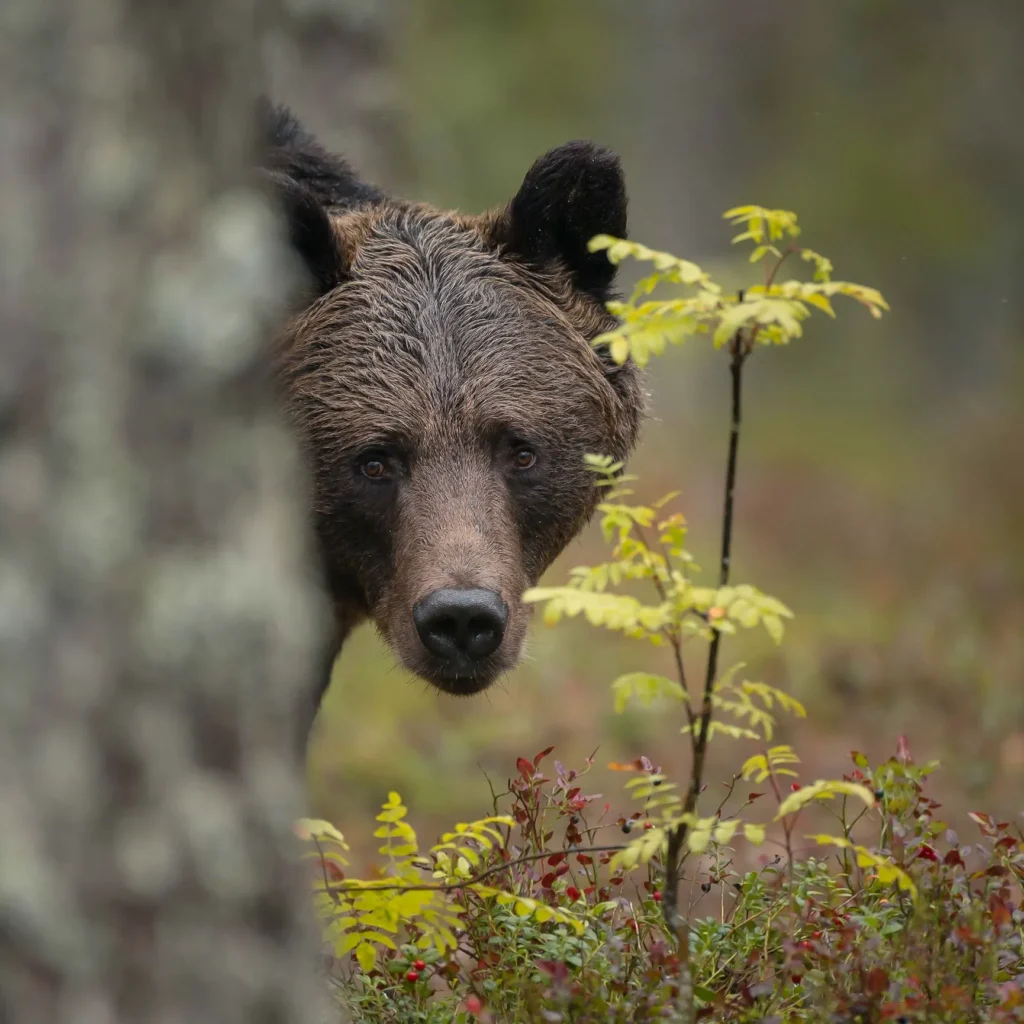
Bear awareness, deterrents and the best bear spray should be a routine part of your wilderness outing, especially early spring through fall. Enjoying warm summer days vacationing with family or friends is likely to include some time in nature away from the concrete jungle. When you head out to enjoy some clean air and adventure in the wilderness, take the Boy Scout motto to heart and “Be Prepared”. You may remember to pack lots of water, snacks, and clothes for unpredictable weather, but are you prepared for a bear encounter? You are entering their natural habitat and this is their season to focus on foraging for food as they prepare for winter. Bear awareness, deterrents and the best bear spray should be a routine part of your wilderness outing, especially early spring through fall. 1. Be Prepared Bear Spray, although a last line of defense, is easy to obtain, carry and to use for every member of your family. It can be easy to become separated from your group, by even few hundred yards, having each member in your group carry a can of bear spray could save a life. Have every member of your group know how, and when, to use bear spray against an aggressive, threatening or attacking bear. 2. Under Pressure Bear spray contains the oil of the hot pepper, Capsaicin, mixed with a propellant and contained under pressure in an aerosol can that is easy to carry and use. Most canisters will deliver about 6-9 seconds of continuous spray and the pepper ingredient causes an immediate and involuntary shutdown of the animal’s functions and preventing or minimizing an attack. Bear Spray is non-toxic and does not cause any lasting harm to the animal or humans. **[It is safer and more effective for people, while ultimately protecting bear populations, than firearm use.][3]** 3. Practice Startled or threatened bears can move very quickly, bear spray should be readied at the sight of an animal and for use when it is 30m (100ft) away. It is useful to practice a zig-zag spraying motion with the safety on or use the Inert Training Spray to practice, particularly valuable for teaching young children how to use Bear Spray if ever necessary. 4. Stay Safe Most importantly, choose destinations away from known bears, travel in groups, and make some noise. Most often bears are just as likely to run from you and your smell before you even notice them, but it’s never worth the risk to get too close. Back away slowly from a bear in your path and stay away if you are unsure or uncomfortable entering bear country. Bear Spray is an inexpensive and indispensable tool for protecting you and your family. 5. Check Expiry Like any aerosol based spray products, while the active ingredient remains potent, it is the propellant that deteriorates and will not expel the product at the desired range, limiting its shelf life to approximately three years. Store canisters safely and avoid extremes in temperatures. On Sale Select options This product has multiple variants. The options may be chosen on the product page Bear Shield Bear Spray Currently selling 225g with 06/2027 expiry date Currently selling 400g with 07/2027 expiry date 2.0% total capsaicin and capsaicinoid – equal or exceeds all other Bear Sprays in Canada Longest… $60.00 – $70.00 $40.00 – $70.00 Select options This product has multiple variants. The options may be chosen on the product page
6 Principles of Effective Electric Fencing
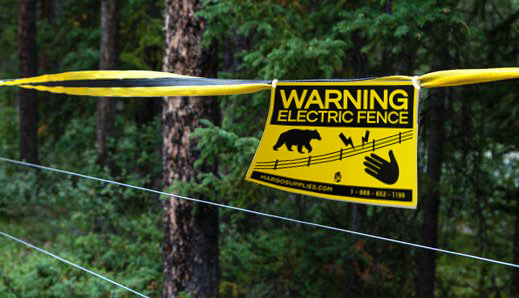
Whenever people live, work, or play in bear country, they bring a multitude of bear attractants with them. Bears are intelligent and curious animals, as well as opportunistic feeders with a strong sense of smell. Anything from beehives, to latrines, or used engine oil can cause an unwelcome visit from a hungry or curious bear. Additionally, once a bear has become conditioned to human food, they often continue to seek human food, posing a danger to themselves and people. Luckily, there is a solution. Electric fencing is a non-lethal deterrent that protects attractants from bears, yet doesn’t cause any harm to the animal. The brief and unpleasant shock teaches bears to quickly avoid the area. Electric fencing can seem daunting but is actually fairly simple and easy to construct. There are many different materials and types of fencing to choose from, but as long as the fence follows these principles, it will keep bears out. Voltage The shock from an electric fence must be strong enough to penetrate the thick skin of a bear. Your fence needs to be putting out at least 7,000 Volts at any spot on the charged wires. Use to test your fence and find shorts. Tight Wires The wires must be tight enough to separate the heavy hair of a bear and deliver the shock right to the skin. Whatever wire material you use, it must be “guitar string tight”. This ensures bears receive a shock as soon as they touch the fence. Corner posts must be braced to ensure they can withstand the tension. Your fence will need to be occasionally tensioned. No Obvious Weaknesses The wires must be tight enough to separate the heavy hair of a bear and deliver the shock right to the skin. Whatever wire material you use, it must be “guitar string tight”. This ensures bears receive a shock as soon as they touch the fence. Corner posts must be braced to ensure they can withstand the tension. Your fence will need to be occasionally tensioned. Grounding Bears receive a shock by completing the electrical circuit from the hot (charged wire) and the energizer. Electricity returns through negative wires or the ground. Ground plates or rods should always be present in an electric fence. The amount of grounding required depends on the soil and size of a fence. As a general rule, you can never have too much grounding. Wire Spacing Wires must be spaced so bears cannot easily go under, through, or above your fence. Permanent fences should have a negative wire no more than 2” above the ground, this discourages digging. Maintenance and Monitoring The fence line should regularly be walked to ensure debris hasn’t gathered against the fence, bears have not begun digging, and that vegetation remains clear of the fence line. A well-built fence looks like a well-built fence. Wires are tight and spaced consistently, corners are braced, and the immediate fence line is kept clean of debris and vegetation. If all these principles are adhered to, the electric fence will stop bears. Some government organizations and conservation groups may even help you pay for electric fencing which will help keep yourself and property safe. Introducing Margo Fence Hub We want to share our expertise with you. Margo Fence Hub is your resource for anything related to electric fencing. From planning to installation, we have compiled various educational resources to help you create an effective electric fence system. Go to Fence Hub
How Effective Are Bird Lasers?

Bird lasers produce a large visible point of light that can be used to scare away problem birds. Many bird species associate this light with a predator like behaviour and flee when exposed to the visible light pattern. The most effective bird lasers produce a wide beam, as opposed to a narrow beam in the conventional laser pointers. Green beams generally seem to produce the best results. Bird lasers have a number of control applications but are especially useful for moving birds from their roosts. At Margo Supplies, we’ve tested lasers on a variety of North American pest species with good results overall and have found them to be especially effective on Canada Geese. Lasers are particularly useful in situations where it is not possible to use other more invasive audio deterrents, such as disturbing birds from roosts in and around warehouses, barns, and close to airport terminals. An effective technique is to repeatedly treat roosting sites at dawn and at dusk, this gives birds time to find alternative roosts outside your control area. Diurnal birds will typically not flee a roost area in full dark, no matter how much pressure you put them under so it is important to begin laser treatment as soon as they return back to their roost. The most effective technique is to use the beam of light to slowly approach the roosting site, remember that birds perceive the laser light as a predator-like presence and so you must leave them an escape path. For indoor use, use the laser beam to “herd” birds towards and exit. While bird lasers can be an effective deterrent, many jurisdictions have laws prohibiting high-power lasers. In Canada, only handheld lasers with an output of >5mW are allowed (class 3a or lower), such as our fly-away laser. Power restrictions do somewhat limit laser applications as these lasers will not produce a very visible light during bright daylight. However, we’ve found these tools to be especially effective at chasing birds from roosts sites, which is typically done in low light situations. In addition, high-power lasers can pose safety hazards, particularly in aviation environments. As with all deterrents, bird lasers have both strengths and drawbacks and should be looked at as one tool in your bird control toolbox. Using a wide variety of affordable tools allows your team to react to diverse species and situations while preventing birds from becoming habituated from one type of deterrent. See our selection of aviation specific non-lethal bird deterrents here. Add to cart Bird Scare Laser – Adjustable Beam Affordable and powerful, while still being safe for both humans and birds Class 3A Laser is the most powerful laser legal for use in Canada Up to 200m (650ft) night… $39.95 $25.98 – $39.95 Add to cart
Bear Safety: An Alberta Case Study
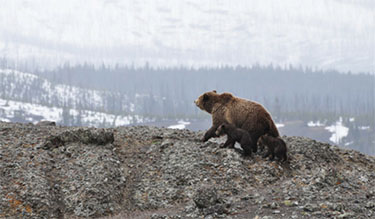
Human-bear conflict is an ongoing challenge to both conservation efforts and in the daily lives of the people who live and work in bear country. Grizzly bears that have been habituated to human food sources can destroy private property, cause significant economic losses, and even cause public safety concerns. However, through cooperation among scientists, government agencies, NGOs and the public, human-bear conflict can be reduced, saving resources and protecting these valuable animals. This month we’re lucky enough to feature the work of Dr. Andrea Morehouse who shares the conservation challenges and practical solutions found in Southwest Alberta. The mountains meet in the prairies in southwestern Alberta. Strong winds shape the landscape and the Rocky Mountains transition rapidly to agricultural lands resulting in spectacular scenery. Grizzly Bears and other large carnivores roam the landscape. The area is part of the Crown of the Continent, home to a UNESCO Biosphere Reserve, and arguably one of the most beautiful places in Alberta. For the past nine years, I have been lucky to call southwester Unlike other areas of the province with extensive protected areas and large tracts of public land, public lands in southwestern Alberta are limited. Within the 3,600 km2 grizzly bear management area (BMA 6) that extends from Highway 3 south to the border with Montana, there are only ~2,000 km2 of public land. Simply put, this is not enough space to sustain viable populations of wide-ranging large carnivores. Consequently, there is a high degree of overlap between large carnivore home ranges and private land uses. Perhaps not surprisingly, southwestern Alberta has and continues to be a hotspot of large carnivore-agricultural conflicts and bear safety continues to be an important topic. “I feel fortunate to work with a community of proactive people willing to consider a landscape shared with carnivores.” The region is home to all four native large carnivores – grizzly bears, black bears, wolves, and cougars – and it was research on large carnivores that brought me to the area. My experience in southwestern Alberta began as a M.Sc. student at the University of Alberta studying wolf diet. Subsequently I completed a Ph.D. also at the University of Alberta studying grizzly bear population ecology and large carnivore conflicts in the region. Depredation of livestock by large carnivores is a long-standing issue, and wolves are the primary culprit. Indeed, during the summer grazing season approximately 45% of wolf diet is domestic cattle. Grizzly bears also kill livestock and are responsible for the second highest number of livestock depredation events in Alberta (second to wolves). Southwestern Alberta is home to a high density of grizzly bears; resident grizzly bear density in BMA 6 is 20.4 grizzly bears/1,000 km2 in the Recovery Zone (Western public lands) and 17.1 grizzly bears/1,000 km2 in the Support Zone (Eastern private lands). Additionally, a high number (approximately 172) of grizzly bears use the area each year. Because of their omnivorous diet, grizzly bears cause more problems than just livestock depredation. Access to attractants can also be a source of conflict between people and bears. Bears can damage standing crops and stored silage and grain; destroy grain bins; raid gardens, fruit trees, and garbage; and be a human-bear safety issue when in proximity to homes and communities. Understandably, such conflicts are are a huge concern to communities that live within carnivore home ranges. What can be done to prevent negative interactions with large carnivores? It is important to understand that there is no “one size fits all” solution to the conservation challenge of mitigating human-carnivore conflicts. Solutions must be place-based and work for the individual experiencing the conflict. I feel fortunate to work within a community of proactive people that are willing to consider a shared landscape with carnivores. Building on previous work led by community groups such as the Drywood Yarrow Conservation Partnership, the Chief Mountain Landowner Initiative, and the Blackfoot Challenge in Montana, as well as collaborations with the provincial government, the Waterton Biosphere Reserve’s (WBR) Carnivores and Communities Program began in 2009 in response to increasing conflicts between large carnivores and agricultural land uses. I have been involved with the WBR since 2011 and joined their board of directors in 2014. [We] operate on a consensus-based model and together have made tremendous strides in reducing agricultural conflicts with large carnivores.” The Carnivores and Communities Program is led by the Carnivore Working Group (CWG), made up primarily of landowners and producers from Cardston County and the Municipalities of Pincher Creek, Ranchland and Willow Creek, as well as representatives from the provincial government, non-profit organizations such as the Nature Conservancy of Canada, and researchers such as myself. The CWG operates on a consensus-based model, and together this group has made tremendous strides in reducing agricultural conflicts with large carnivores in the local community. Much of the work completed by the WBR CWG to date has focussed on restricting grizzly bear access to agricultural attractants. Our evaluation of grizzly bear conflicts in the area has identified grain and dead livestock as the two most common grizzly bear attractants in southwestern Alberta. Changes to grain bins such as bear-proof grain bin doors, hopper bottom bins, and the installation of cement floors have all helped prevent grizzly bear access. Sea Cans, or shipping containers, have also been used successfully to store grain and other attractants. Additionally, electric fencing has been a powerful tool in preventing grizzly bear access to a wide variety of attractants including grain, silage, bee yards, and calving pastures. Dead stock, or boneyards, represent a major attractant not only for grizzly bears but for also for all large carnivores, potentially bringing carnivores into proximity with other attractants and agricultural land uses. The WBR’s dead stock removal program focuses on removing this attractant from the landscape through either on-farm pickup or bear proof deadstock bins where a producer can bring dead animals, thereby removing the attractant from his/her property. “Electric fencing has been a powerful tool in preventing grizzly bear access to a wide variety
Do Bird Cannons Work?

Birds have a knack for going where their presence can cost your operation in time and resources, pose a danger to the birds themselves, or even to humans. The question is, can a low-cost propane bird cannon prevent this? The short answer is yes. We have long understood that loud noises scare birds. The Japanese Shishi-odoshi – a swinging bamboo arm that hits a rock – has been used for centuries to keep birds out of gardens. We’ve taken that same principle and juiced it up to create 120 dB explosions. The proof is in the widespread use; airplane passengers are protected by Zon Electra Scare Cannons at the world’s largest airports. Bird Cannons work in two distinct ways. The first and strongest is the fear/startle reaction. Many birds are exposed to hunting pressure and learn to associate the sound of a shotgun with real danger. Even if they haven’t been exposed to hunters, the loud, unnatural sound of a cannon detonation is enough to startle birds into the area and chase them out of the control area. While the fear reaction will be effective over a larger area, the sudden blasts of a propane cannon also act as a continual shock to their senses and will interrupt natural behaviour, keeping them nervous, on edge, and more susceptible to other scare tactics. However, there is no magic button in wildlife control. The fear and disruption created by a cannon must be stronger than the attractant bringing the birds in. Just like antelope in the Savannah will face the dangers of lions to get to fresh water, birds will be more resistant to any deterrent if they need the food or shelter available in your control area. Switch Things Up It is important to vary your strategy to prevent birds from becoming accustomed to the noise. Bird Cannons should regularly be moved. The higher the bird pressure, the more it should be moved – once every 2-3 days under the heaviest pressure. Take advantage of the Random firing modes offered by the Zon Electra Scare cannon or use the 360 rotating tripod to keep the cannon moving. Disguising the cannon using camouflage paint or covers will prevent birds from associating the sound with a single source. Use On-Demand Activation Use On-Demand activation to ensure the bird cannons only detonate when they have maximum effect. One perfectly timed cannon blast directly beside a flock of European Starlings will have more effect than more frequent detonations further away. The Push-Button control and radio controlled cannon upgrades are particularly effective. Chaos and Confusion Keeps Birds Away Bird Cannons are the base for the most effective bird control programs. Adding different effects on top increases the effectiveness of your program as a whole and eliminates the problems of bird habitation. Not only do birds have difficulty processing multiple threats all occurring in the same area, but other products such as pyrotechnic scare cartridges or combining cannons with falconry also convinces the birds that there are consequences to propane blasts, which keeps the propane blasts scaring even when the other deterrents are not used. Bird Scare Cannons are an effective way to keep unwanted birds from your target area. Products become more efficient, however, when used together in a system and by ensuring that birds do not grow accustomed to your deterrent regimen.
Bird Repellent: How to Keep Unwanted Birds Away with a System-Based Approach

Birds can cause significant damage to agricultural crops, interrupt industrial operations and even pose a danger to humans, such as during airplane bird strikes. Unfortunately, when birds are rewarded with a safe place to roost, food or other high value attractants, they can be difficult to keep away. Luckily, non-lethal repellent tools used in a strategic system can chase birds away and keep them from returning. There are three different classes of deterrents: Audio deterrents, Visual deterrents, and Active deterrents. You can create an effective bird repellent system by using a variety of options from each class. In this way, it is possible to efficiently protect anything from backyard blueberry crops to the biggest airports in the world in an affordable manner. While some individual species can be more sensitive to specific stimulus, this general strategy holds true for all species of birds. Repellents or deterrents work by utilizing involuntary physiological stress responses from birds when they think that they’re in danger. The greater the perceived threat from the deterrents are, the higher the likelihood of the birds believing they’re in constant danger; keeping them away from the controlled area. We call this “creating a landscape of fear”. For this to work, the fear you impart must be stronger than the attractant that brought them there in the first place. The most effective way to create this landscape is to use repellents from each of the deterrents classes to prevent habituation. Deterrent Classes Explained: Audio Audio: Deterrents that incorporate loud noises to startle and chase birds from the control area. Examples: Our Propane Cannons emit a 120 decibel (dB) audio blast, similar to the sound of a shotgun. All species of birds are sensitive to this sound. Continually move the propane scare cannons from place to place to keep birds from becoming accustomed to it. Propane cannons can effectively be combined with one of our Bird Gard speaker systems, which replicate the sound of injured birds in distress. Unwanted birds will connect the area with danger when they hear the cries from the speaker. Specific sounds combinations are available to most North American bird species. Visual Visual: Deterrents that make use of reflective material, lights, flashing, simulations or other visual elements. Examples: The strongest sense for a bird is their eyesight, which they rely on for flying, finding food and avoiding predators. Visual deterrents, such as predator effigies or dead decoys, are a non-lethal way to trick even the most intelligent prey species into believing predators are hunting in the area when they see “one of their own” that has been “killed” or a “predator” perched nearby. This further convinces them that your control area is unsafe to remain in. Active Active: Deterrents that are directly controlled by humans as a responses to birds in the area. The active class can include audio and visual deterrents as well. Example: Our most popular products, 15mm pyrotechnic scare cartridges, offer a variety of visual and audio effects and travel between 30m – 380m+ (90ft – 1250ft+) through the air. We stock the largest selection of pyrotechnic scare cartridges in North America. Combining different cartridges creates more chaos and prevents birds from becoming habituated to any one special effect and since you are using the deterrent only when needed, it is difficult for birds to become accustomed to these disruptive sights and sounds. We also supply the strongest hand-held bird control lasers allowed in Canada. Geese are particularly sensitive to the strange light pattern from the laser and react immediately. Like all tools, different bird repellent tools have their strengths and weaknesses. Don’t leave any safe havens in your control area; active and immediate use of deterrents prevent birds from being rewarded. The best bird control programs combine audio, visual, and active deterrents.
Bear Spray: A Necessary Tool for Backcountry Recreationists
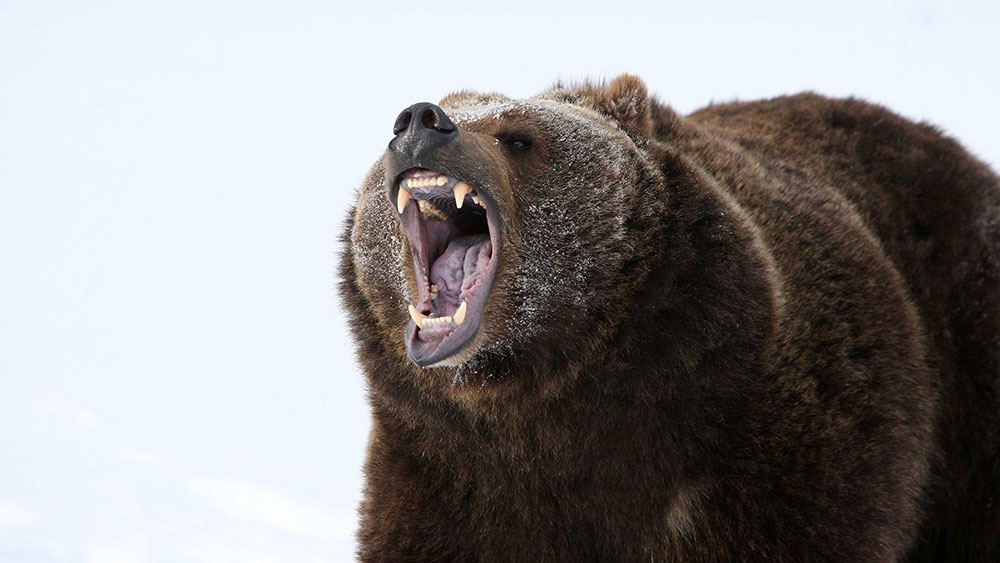
The snow is starting to fly in the Rockies and for a growing number of outdoor recreationists, this means strapping on snowshoes, ski boots, or crampons. But amid all the specialized winter gear, I don’t often see bear spray with backcountry enthusiasts. After a busy autumn packing on the calories, most bears across North America hibernate during winter when the opportunities for food are scarce. Because of this, bear conflicts are at their lowest, leading backcountry recreationists to forget to include bears in their risk assessments. While rare, potentially dangerous bear encounters can occur in all seasons, including winter. In December 2015, two alpinists triggered a defensive attack from a Grizzly Bear on a high and exposed slope of Mt. Wilson in Banff National Park. You should expect to see bears in bear country no matter what season you are visiting. Bear spray is an essential piece of safety gear that should always be included in your pack. Understanding bear hibernation Most bears do sleep away a good portion of the winter, but this varies significantly by area, weather, and food availability. For example, Inland Alaska grizzlies spend up to 6 months in their den while black bears in New Mexico might only spend a few weeks asleep. Snow on the ground is not a good indicator of hibernation status. Bears may search for food late into the fall and may wake up early, especially if they didn’t get to eat their fill the last fall. Even in the dead of winter, it is not unusual for bears to leave their den periodically during the winter. While the probability of an encounter does decrease in the winter, bear encounters are possible any time of the year. Dangerous bear encounters are still possible during heavy hibernation. A bear’s metabolic, heart, and breath rates drop significantly during hibernation to conserve energy; however, unlike other hibernating mammals, core body temperature remains quite high. A hibernating grizzly bear’s core temperature drops to about 31 degrees Celsius, within 11 degrees of their normal temperature. This function allows bears to awake quickly and be ready for action. Bears are easily aroused and may exit their dens if disturbed, ready to protect themselves from any perceived threat. Grizzly Bear den site selection may also increase conflict with the rapidly growing sport of backcountry skiing. Grizzlies often select den sites on steep alpine slopes with high snow accumulation, making it easy for them to build a deep and well-insulated shelter. In Yellowstone Park, Grizzlies prefer to den on the mid to upper third of 30 degree to 60 degree slopes with Northern exposures between altitudes of 6,500 – 10,000 feet – otherwise known as ideal backcountry ski terrain. Protect yourself with bear spray While encounters are more unlikely in the winter months, it is important to show respect for bears by being prepared and following normal precautions in bear country; make noise, travel in groups, and carry bear spray. If you see evidence of a bear den, quickly leave the area. Bear attacks in winter are more likely to be defensive. All backcountry enthusiasts should understand how to read bear behaviour and what to do in the case of a bear charge or attack. Travelling in cold weather poses challenges; however, bear spray can still be effective. You should never store bear spray below freezing temperatures, but you can still safely carry it when travelling in the cold. We stock a wide variety of bear spray holsters which help ensure bear spray remains secure but easily accessible when you need it; bear spray is only useful if it is within easy reach. On Sale Select options This product has multiple variants. The options may be chosen on the product page Bear Shield Bear Spray Currently selling 225g with 06/2027 expiry date Currently selling 400g with 07/2027 expiry date 2.0% total capsaicin and capsaicinoid – equal or exceeds all other Bear Sprays in Canada Longest… $60.00 – $70.00 $40.00 – $70.00 Select options This product has multiple variants. The options may be chosen on the product page
Keep Your Cabin Safe with Electric Bear Fencing

“Electric Fencing for a cabin?” As the weather cools down, you’re likely not considering installing bear fencing. If you are a cottage owner, trapper, or outfitter with a cabin, however, it is strongly recommended you consider bear fencing to protect your assets. If you’re not careful, your cabin might receive a visit from an uninvited guest while you’re away. Bears search for food with their nose and your cabin is filled with attractants. Not only will they search for leftover food, they are also attracted to garbage, waste-water, household chemicals, motor-oil, almost anything with a smelly or pungent aroma. At this time of year, bears are packing in as many calories as possible, up to 20,000 per day in preparation for the winter. Bears are muscular critters and they can easily break through doors, windows, and even plywood cabin walls to get to that food source. And once a bear is rewarded with food, they’ll keep coming back to your cabin year after year. How to Prevent Damage with Bear Fencing Luckily, with a little prevention work, you can keep bears searching for wild food out of your cabin. Electric bear fencing is one of the best solutions to prevent cabin damage. You can install the fence directly on your cabin to protect the control area when you’re not around. Electric fences deliver a painful, but harmless shock that teaches bears to avoid your cabin. By targeting behavioural changes and creating a “landscape of fear”, bears will learn that your cabin as off limits. Follow these simple principles for your bear fencing: Think like a bear: You want a bear to contact the positive (charged) wire before it has a chance to cause any damage. Install wire anywhere you think a bear is likely to gain access – you’ll want to protect every window and door, and string at least one wire along the wall. Energizers: Electric fence energizers send short, safe, but strong electric pulses through the fence. If your cabin’s power supply will remain active choose and AC-powered charger. If not, a solar powered system will keep the fence active as long as you have sunlight reaching the panel. Our solar energizers use AGM frost-proof batteries are designed to remain active in cold temperatures. The fence energizer should be producing at least 7,000 volts along all points of the cabin wrap to be effective. Bear fencing sends a shock when the bear grazes the electric circuit, often done via the ground (earth) and a 6 inch ground rod driven into the soil. Grounding is one of the most important components in an electric fence, always use bonafide ground rods. If a section of the electrified wire passes over insulated ground material – like a wooden deck – you’ll need to place a negative wire connected directly to the negative about 6 to 8 inches away from the positive wire. Wire Selection: Most importantly, the wire needs to be tight to ensure bears receive a strong shock to their skin. Baygard Polywire is high-visibility and easy to work with for seasonal installations. Galvanized Steel Wire is an excellent choice for more permanent installations. Insulators: You’ll need to keep your electrified wire away from any other material, including your cabin. Electric fence insulators can be screwed right onto wood for easy installation. It might seem intimidating at first, but installing bear fencing is not difficult. With a little planning and execution, you can protect your cabin all year round. Visit our Fence Hub to learn all about fencing. Introducing Margo Fence Hub We want to share our expertise with you. Margo Fence Hub is your resource for anything related to electric fencing. From planning to installation, we have compiled various educational resources to help you create an effective electric fence system. Go to Fence Hub
Preventing Human-Bear Conflicts With Computer Modelling Technology

Press Release– Margo Supplies is proud to announce our involvement in a new computer modeling study over the next year. We will work alongside Dr. Lael Parrott of UBC – Okanagan to research the best methods for reducing human-bear conflicts in Whistler, BC in Canada. Dr. Parrott has received federal funding through the Natural Sciences and Engineering Research (NSERC) Engage Grant to support the study. The grant is designed to facilitate partnerships between innovative Canadian companies and experts at Canadian universities and colleges. Human-bear conflicts occur when bears become habituated to human presence or are rewarded with non-natural food, including garbage. Habituated and food-conditioned bears pose a threat to property and human safety and are often euthanized. By using non-lethal deterrents and attractant management methods, we can prevent bears from becoming conflict bears, preventing damage to property and people, and conserving bear populations. Non-lethal methods include aversive conditioning using pyrotechnic noisemakers, also known as bear bangers, and electric fencing around known attractants. The Engage Grant will support the development of a computer agent-based model, which replicates the ecosystem of the Whistler Valley, and places simulated bears within it. This theoretical model will be used to test different deterrent and attractant management strategies and predict their effectiveness. The model will be able to predict what changes in bear behaviour are likely to occur in different deterrent and attractant management scenarios. By including both costs of deterrent strategies as well as responding to problem bears, this model will become a tool municipalities can use to help determine the best solutions and the most efficient way to allocate funds and reduce the number of conflict bears as a result of human activity. “I think most people enjoy sharing the landscape with bears,” says Jeff Marley, president and founder of Margo Supplies. “Our goal is to develop a model that any municipality can use to help inform their bear programming, ultimately creating a better way for us to co-exist with bears.” “Human-bear conflict is a wicked problem with many facets, both ecological and social,” says Dr. Lael Parrott. “By developing a new way to analyze how bears respond to human development across an entire landscape, we hope to help inform bear management, conserving bears while protecting people and property.” For further information, please contact: Jared Marley Director of Communications Margo Supplies Ltd. Tel.: 403-652-1932 E-mail: jared@margosupplies.com Dr. Lael Parrott is a Professor of Earth and Environmental Science and Biology at the University of British Columbia – Okanagan Campus. She develops computational models of complex ecosystems, which inform environmental management decisions in the real world. Parrott’s research is focused on creating ways to improve our quality of life while reducing our environmental impact. Learn more about the Natural Sciences and Engineering Research Council (NSERC) Engage grant. Agent-Based Modeling simulates individual actors and their interactions with the ecosystem through computer modeling. By simulating the actions of individual animals, Agent-Based Modeling can be used to test and predict the effect on animal behavior caused by changes in the ecosystem.
From Fruit to Fences: How I Became a Leader in Wildlife Management
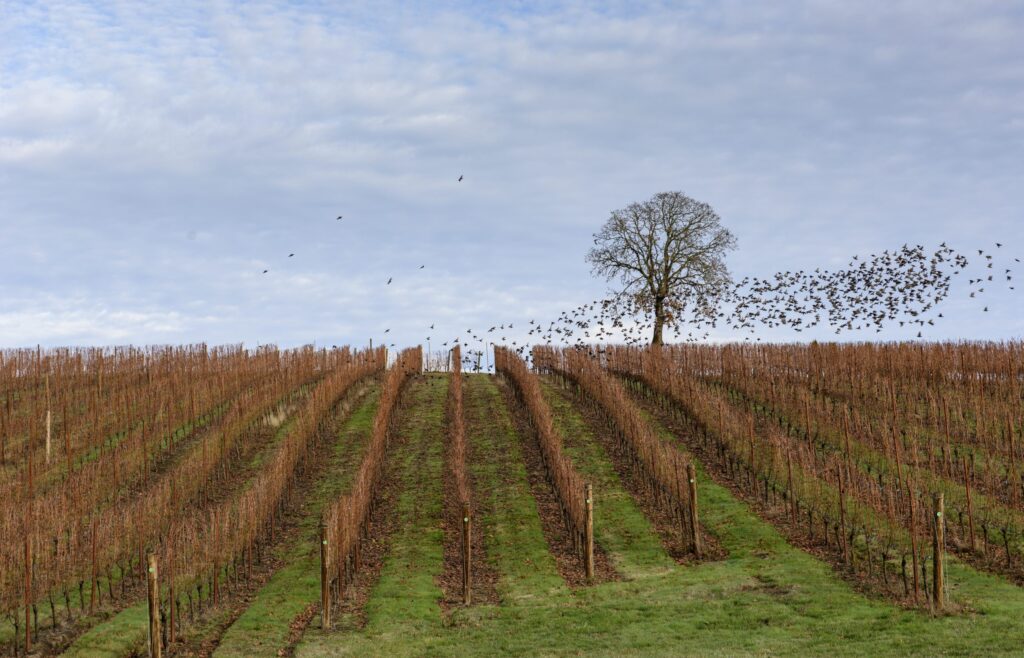
My name is Jeff Marley and I’m the founder and owner of Margo Supplies. Working on my wife’s family orchard, I quickly learned how wildlife damage can impact total yields. I began experimenting with pyrotechnic scare cartridges and developed my own techniques to reduce damage in our fields back in the late 1970s. Using this experience, I began to develop my own techniques to reduce the incidents of wildlife in our fields. Developing these products became a passion of mine. After moving to Alberta, I started expanding my product offerings, sold units to neighbouring farms, then began working with government agencies and other industries. Margo Supplies was born in 1980. Behaviour-Based Solutions Throughout my career in wildlife management, I’ve learned the importance of working with and taking advantage of natural animal behaviour. By creating a “landscape of fear,” we can deter animals from entering control areas and create lasting changes in the local environment – your control area. Our goal is to get the target animals to associate your control area with negative stimuli, reducing their determination to enter the area. Behavioural solutions are often the best way to ensure that an animal doesn’t simply replace another in the future. We want to create a lasting impact in the target area. Whether you have issues with birds eating your fruit or bears invading your camps and parks, if you convince them it’s unsafe, they will learn. Non-Lethal We are manufacturers and users of our products. We prefer to use simple, yet effective tools that don’t get in the way of your home or operation. And because they’re effective, you likely will incur fewer costs with generate better results. Practical Solutions By protecting an area using our “landscape of fear” tactic, we can achieve behavioural-based solutions in a humane and environmentally friendly way. Our use of visual, auditory, or painful stimulants in the control area are more effective – which saves you money over time. Lethal tactics can solve one problem, but it won’t solve multiple ones down the line. I know first-hand that a predominantly non-lethal philosophy will better serve your needs. Systems-Based Approach I’m in this business because I love the outdoors. I believe it’s important to give back to support wildlife conservation efforts. We donate our time, products and services as well as financial support to the conservation of black, grizzly and polar bears in western North America and the High Arctic. Conservation We take a systems-based approach to resolving wildlife conflict issues. This means by using our tools and techniques, we’ll help you create a comprehensive strategy that will keep unwanted wildlife away from the control area. Our systems and philosophy are implemented on our site and used by many of our industry partners. We extensively research and test each system and product. Logistics Support Conflict with wildlife often happens in the backcountry. We understand these are remote areas, that are difficult to ship to – and when you need a product, you need it right away. That’s why we’ve set up four shipping warehouses to dramatically reduce the time it takes to get you your solutions. We’ve shipped to every corner of the globe. After over 35 years, I’ve worked with and gained insight into the various needs of industry, government, and outdoors people, and feel confident that my expertise can create a lasting solution for your needs. -Jeff Marley Margo Supplies was born out of a love for the backcountry life, a desire to help people’s businesses thrive, and a respect for the wildlife that share our planet with us.

